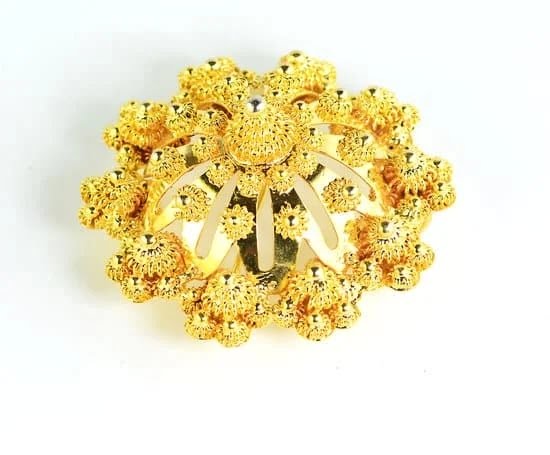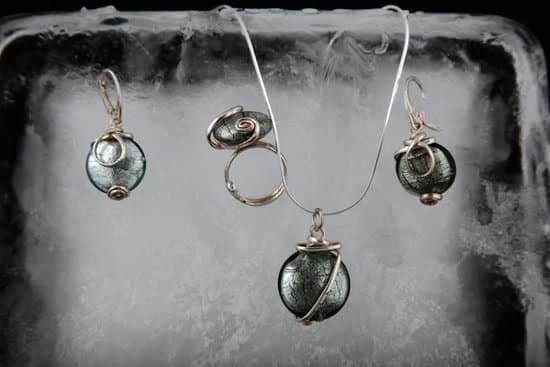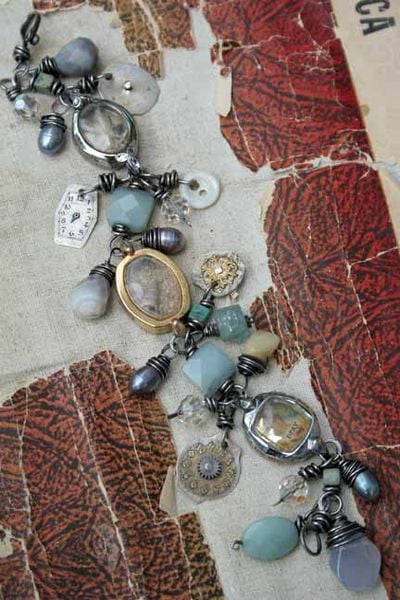Introduction of Brass Jewelry and its Popularity
Brass jewelry is becoming increasingly popular because of its affordability and variety in style. Brass is an alloy made from copper and zinc, and can be manipulated to resemble other more expensive metals such as gold or silver. It is also relatively easy to mold and shape into a multitude of designs and styles. This makes it incredibly versatile, allowing designers to create unique pieces of jewelry. Additionally, brass is much less expensive than gold or silver, making it appealing for those who may not have the budget for other metals.
The advantages of brass jewelry are not just limited to cost savings; it is also strong and resistant to tarnishing. If cared for properly, brass can last for many years with a classic look that only improves with age. However, one potential disadvantage of brass jewelry is that some types may contain nickel which can cause allergic reactions in some people if worn directly against the skin. Many current manufacturers understand this risk and will advertise whether their brass has been plated with nickel or not, allowing buyers to make an informed decision about the type of metal they would like to purchase.
Overall, brass jewelry offers something new and exciting to modern fashionistas on a budget looking for longevity in their investments when shopping for jewelry pieces at an affordable price point. Whether you’re looking for contemporary designs or timeless classics, there’s no better way than integrating brass jewelry into your wardrobe as a stylish and cost-effective choice!
Health Implications of Brass Jewelry With Nickel
Certain brass jewelry, particularly those with yellow or gold tones, may contain up to 8.5 percent nickel, according to the National Institutes of Health (NIH). Nickel is a metal that some people are allergic to and can cause skin irritation when exposed. Reactions may appear as redness, itching, hives and even eczema-like symptoms. However, the amount of nickel that can be absorbed through the skin is usually too small to cause harm. If you have an allergy to certain metals such as nickel, it’s important to understand how wearing such jewelry could affect you and avoid items that may trigger a reaction.
In addition to potential allergic reactions, there is also concern about other long-term health implications for those wearing brass jewelry containing nickel. The exact effects are not yet known but research has shown that overexposure to the metal can lead to severe poisoning called ‘nickel toxicity’ that can affect the kidneys and nervous system in extreme cases. It is therefore recommended that you limit your exposure if you wear brass jewelry with nickel content for long periods of time or on sensitive areas of the skin. Other precautions include removing items before showering or engaging in contact sports as sweat may accelerate oxidation (the presence of any residual amounts of nickel ions entering circulation through perspiration) which could still affect your body over time.
Is Brass Jewelry Contaminated With Nickel?
Yes, brass jewelry can contain nickel. Nickel is a valuable alloying element that gives brass strength and color. It’s also a major source of irritation to skin, especially if you are allergic to nickel. Nickel can cause hives and eczema, which is why some countries require manufacturers to add warning labels when jewelry containing nickel is sold.
There are two main ways to identify if your brass jewelry has been contaminated with nickel: through visual inspection or through laboratory testing. Visually inspecting popular parts of metal used in jewelry such as clasps, earring posts and rings will help narrow down the chance of purchasing an item that contains nickel. Visual inspections often show a silver-white sheen on the metal’s surface – this indicates the presence of nickel in the alloy. If a metal test kit isn’t available in-store at the time of purchase, it’s possible to send samples out for laboratory testing using specialized X-ray fluorescence (XRF) technology or portable x-ray diffraction (XRD). The results indicate how much or how little Nickel is present in the alloy.
While there are risks associated with wearing brass jewelry contaminated with nickel, these can be avoided by doing research ahead of time by reading product labels carefully and taking precautions such as conducting visual inspections or sending samples for laboratory testing prior to making any purchase decisions.
An Alternative
Lead-free brass jewelry is an alternative to regular brass jewelry that can provide extra safety and peace of mind for people with nickel allergies. The main benefit of lead-free brass jewelry is that it does not contain nickel, a metal commonly used in regular brass jewelry which can cause skin irritation and rashes in some people. Lead-free brass also has the bonus of being more durable than regular brass and therefore may last longer than standard jewelry before showing signs of wear. The trade off is that lead-free brass jewelry may be more expensive than regular brass, which could be a downside depending on budget. Additionally, lead-free brass may tarnish more quickly when exposed to moisture, making the piece noticeably darker or less shiny.
Care Tips for Wearing Brass Jewelry
When Wearing Brass Jewelry:
Avoid wearing brass jewelry when swimming or showering, as water can corrode the metal. Prolonged contact with moisture can cause a reaction which makes the item corrosion more difficult to remove.
Store Brass Jewelry: Store brass items in a cool, dry location away from direct sunlight. It should be wrapped in cotton-based materials like a cloth bag or tissue paper to avoid scratching it against other items.
Cleaning and Polishing: To clean brass jewelry, use a soft cloth designed for metal jewelry and warm water. You can also use special cleansers or polishes made specifically for metal jewelry to improve shine. It’s important to follow instructions exactly when using any of these cleaners or polishes, as they can contain harsh chemicals that could be damaging.
Detecting Nickel Contamination: Some brass jewelry may become contaminated over time with nickel which is an allergen for some people. You may want to test your bronze piece before wearing it by testing the surface near the clasp area with a nickel tester kit or simply check if there are signs of discoloration on the skin after taking it off. If you suspect your jewelry has been contaminated, it’s best not to wear it until you have identified and eliminated the source of contamination.
The Benefits and Drawbacks of Wearing Brass Jewelry
Benefits of Wearing Brass Jewelry
1. Cost – The main benefit of brass jewelry is that it’s much cheaper than more precious metals like gold or silver. This makes it a good option for individuals on a budget who still want stylish and fashionable jewelry.
2. Durability – Compared to silver and gold, brass is much more durable, making it a great choice for everyday wear. It won’t tarnish or corrode over time and is less likely to get damaged from daily wear and tear.
3. Variety – Because brass can be combined with other metallic finishes, polished stones, and crystals, there is an even greater variety of beautiful options available for anyone looking for jewelry made from an alternative metal source.
Drawbacks of Wearing Brass Jewelry
1. Allergy Risk – Since some brass jewelry contains nickel, there may be an increased risk of allergic reactions in individuals with sensitive skin or pre-existing allergies to nickel alloys. To minimize the risk, look for items labeled as “nickel-free” or apply a protective layer (e.g., clear nail lacquer) to the jewelry beforehand if necessary.
2. Appearance – Depending on the design, brass jewelry may take on slightly yellowed hue which may not appeal to everyone’s aesthetic preferences when compared to precious metals like silver or gold. Additionally, brass tends show fingerprints more easily than other metals so routine polishing may be necessary to maintain its shine and luster over time.
Conclusion
Yes, brass jewelry can contain varying amounts of nickel and other metals. Thus, individuals who have allergies or sensitivities to these metals may experience skin irritation upon contact with brass jewelry. This is especially true if the jewelry has been plated with nickel. To protect themselves, people should be aware of the materials their jewelry contains and avoid items that are likely to cause allergic reactions. Additionally, it is best to take off brass jewelry before showering or swimming in order to reduce exposure to potential allergens.

Welcome to my jewelry blog! My name is Sarah and I am the owner of this blog.
I love making jewelry and sharing my creations with others.
So whether you’re someone who loves wearing jewelry yourself or simply enjoys learning about it, be sure to check out my blog for insightful posts on everything related to this exciting topic!





